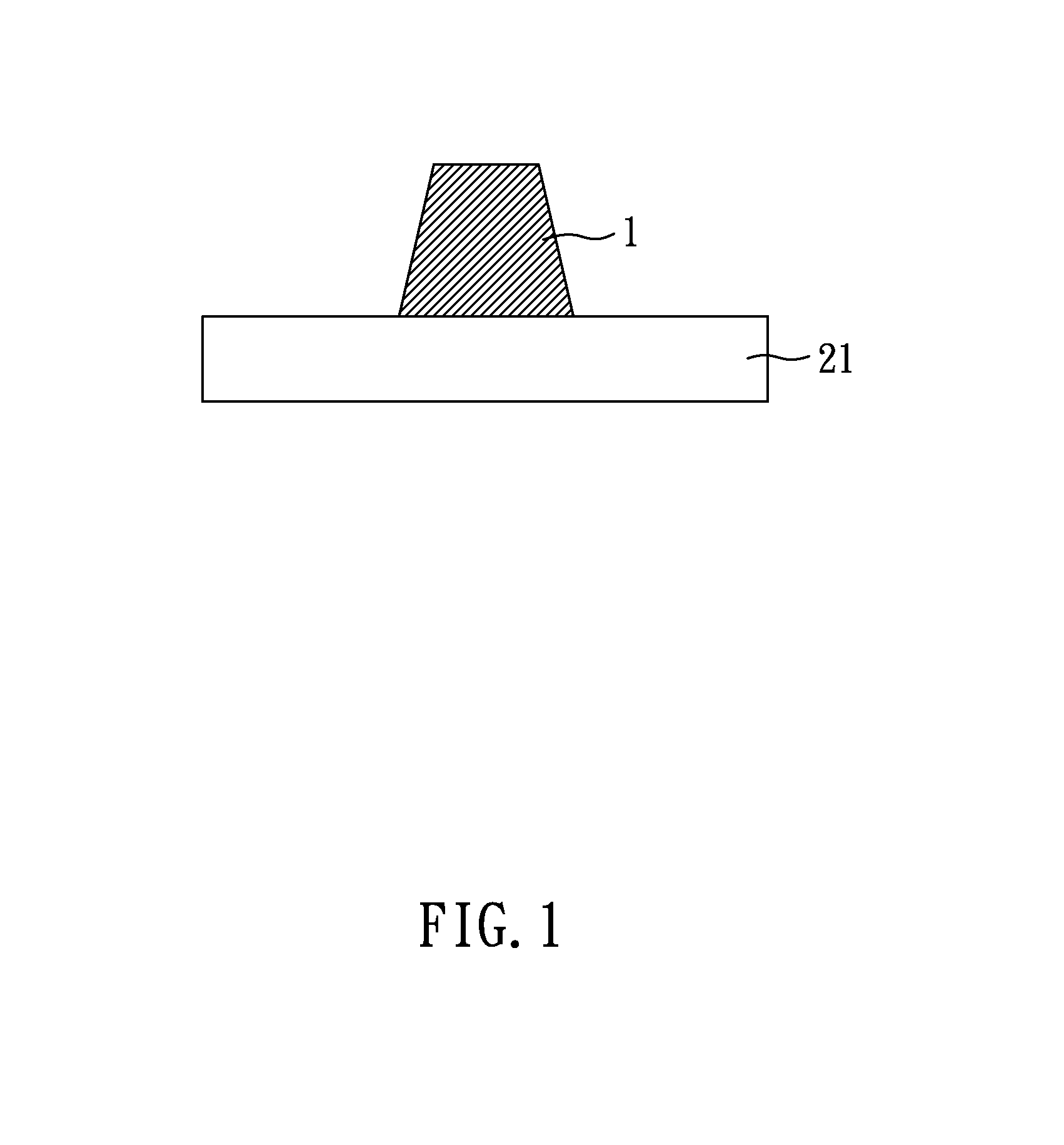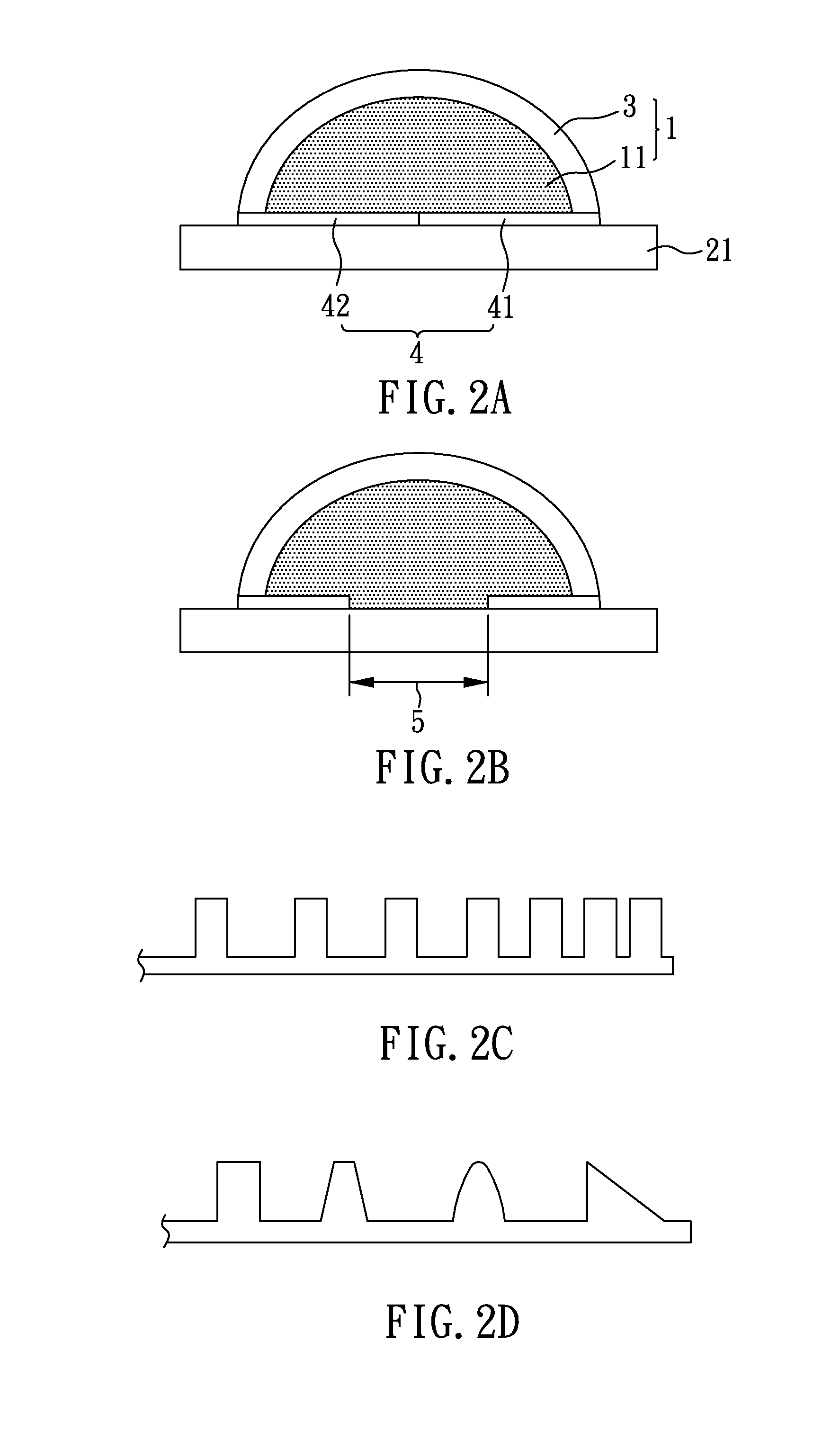Liquid crystal display panel
a liquid crystal display and display panel technology, applied in non-linear optics, instruments, optics, etc., can solve problems such as light leakage of liquid crystal displays, and achieve the effects of reducing incident angles, reducing incident angles, and increasing shift angles
- Summary
- Abstract
- Description
- Claims
- Application Information
AI Technical Summary
Benefits of technology
Problems solved by technology
Method used
Image
Examples
example 2
[0034]FIG. 2A shows a schematic diagram of the protruding electrode layer with the submicron structures. A protruding part 11 is formed on the glass substrate 21 by using the organic materials, such as fluorinated ethylene propylene copolymer: perfluoro ethylene propylene copolymer, poly(perfluoro ethylene propylene); or tetrafluoroethylene-perfluoroalkoxy vinyl ether copolymer, and then an ITO is coated thereon to serve as an electrode layer 3. In this case, the cross-sectional shape of the protruding electrode layer 1 is semicircular (but the present invention is not limited thereto, the cross-section shape may also be of other shapes such as the semi-elliptical shape). In addition, a submicron structure layer 4 is further disposed between the protruding electrode layer 1 and the glass substrate 21, wherein the submicron structure layer 4 includes the symmetric submicron structure units 41, 42 as shown in FIG. 2C or 2D. Referring to FIG. 2C, the arrangement of the submicron struct...
example 3
[0036]FIG. 2B shows a schematic diagram of the protruding electrode layer with the submicron structures. The same manufacturing process as in Example 2 is carried out, except that the middle of the submicron structure units 41, 42 of the submicron structure layer 4 has an opening 5 which corresponds to the center of protruding electrode layer 1 (more gentle region).
example 4
[0037]FIG. 4A shows a schematic diagram of the protruding electrode layer with the multilayer film. A protruding part 11 is formed on the glass substrate 21 using the organic materials, such as fluorinated ethylene propylene copolymer: perfluoro ethylene propylene copolymer, poly(perfluoro ethylene propylene); or tetrafluoroethylene-perfluoroalkoxy vinyl ether copolymer, then an ITO is coated thereon to serve as an electrode layer 3; in the current case, the cross-sectional shape of the protruding electrode layer 1 is semicircular (but the present invention is not limited thereto, the cross-sectional shape may also be of other shapes such as the semi-elliptical shape). In addition, a multilayer film 61 is further disposed between the protruding electrode layer 1 and the glass substrate 21. As shown in FIG. 4A, the light path is indicated by the arrowhead, and the light path may be adjusted by its interfaces with different refractive indexes to reduce the incident angle, thereby lowe...
PUM
 Login to View More
Login to View More Abstract
Description
Claims
Application Information
 Login to View More
Login to View More - R&D
- Intellectual Property
- Life Sciences
- Materials
- Tech Scout
- Unparalleled Data Quality
- Higher Quality Content
- 60% Fewer Hallucinations
Browse by: Latest US Patents, China's latest patents, Technical Efficacy Thesaurus, Application Domain, Technology Topic, Popular Technical Reports.
© 2025 PatSnap. All rights reserved.Legal|Privacy policy|Modern Slavery Act Transparency Statement|Sitemap|About US| Contact US: help@patsnap.com



